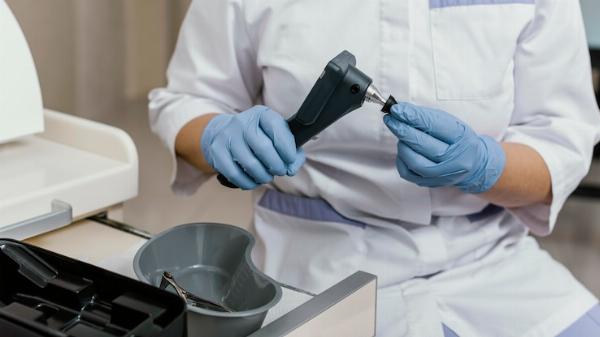 High-Converting Funnels – From Ad Click to Final Sale!
High-Converting Funnels – From Ad Click to Final Sale!
What specialty is a biopsy?
Written by Dynamic » Updated on: June 17th, 2025

Understanding Biopsy A Crucial Diagnostic Specialty
What Is a Biopsy?
Biopsy for Diagnosis Purposes in Dubai to diagnose various conditions by examining tissue samples. This specialty involves the extraction and analysis of small amounts of tissue from a patient’s body to determine the presence, extent, or type of disease. The goal of a biopsy is to provide accurate and detailed information about a patient's health, helping guide appropriate treatment plans.

The Role of Biopsy in Medical Diagnosis
Biopsy plays a critical role in diagnosing and evaluating a wide range of medical conditions. The procedure is crucial in detecting cancers, identifying infections, assessing autoimmune diseases, and diagnosing inflammatory conditions. By examining the tissue sample under a microscope, pathologists can identify abnormal cells, confirm diagnoses, and determine the severity of a disease.
Biopsy is essential in oncology for diagnosing cancerous tumors and determining their type and grade. For example, a breast biopsy can help diagnose breast cancer, while a skin biopsy can identify skin cancers such as melanoma. The results of a biopsy can significantly impact treatment decisions, influencing whether surgery, chemotherapy, or radiation therapy is needed.
Different Types of Biopsy Techniques
Several biopsy techniques are employed depending on the location of the tissue, the condition being investigated, and the patient's overall health. Each method has its specific indications and advantages:
Needle Biopsy: This technique involves using a thin, hollow needle to extract tissue samples. It is often used for tumors in organs such as the liver, kidneys, or prostate. Needle biopsies can be further categorized into fine needle aspiration (FNA) and core needle biopsy, each offering different levels of detail.
Endoscopic Biopsy: Performed using an endoscope—a flexible tube with a camera and tools—this biopsy method allows for the examination and sampling of tissues from internal organs such as the gastrointestinal tract or respiratory system.
Surgical Biopsy: In cases where other methods are not feasible or conclusive, a surgical biopsy may be performed. This involves removing a larger portion of tissue or an entire lump through an incision. Surgical biopsies can be either excisional (removing the entire lesion) or incisional (removing a part of the lesion).
Skin Biopsy: Commonly used to diagnose skin conditions, this method involves removing a small sample of skin for examination. Techniques include punch biopsy, shave biopsy, and excisional biopsy.
The Biopsy Procedure
The biopsy procedure typically involves several steps:
Preparation: The patient may be asked to fast or follow specific instructions before the procedure. Depending on the biopsy type, local anesthesia may be administered to numb the area, or general anesthesia may be used for more invasive procedures.
Sampling: The biopsy technique is selected based on the tissue location and the suspected condition. The healthcare provider collects the tissue sample, ensuring precision and minimizing discomfort.
Post-Procedure Care: After the biopsy, the patient may experience mild discomfort, swelling, or bruising at the site. Follow-up instructions, including wound care and activity restrictions, are provided to ensure proper healing.
Analysis: The collected tissue is sent to a laboratory where a pathologist examines it under a microscope. The pathologist identifies any abnormalities, makes a diagnosis, and prepares a report for the healthcare provider.
Interpreting Biopsy Results
The results of a biopsy are crucial in formulating a treatment plan. They provide detailed information about the presence and extent of disease, allowing healthcare providers to tailor treatment strategies to the patient’s specific needs. Biopsy results may confirm or rule out a diagnosis, assess disease progression, or evaluate the effectiveness of ongoing treatment.
The Importance of Biopsy in Disease Management
Biopsy is invaluable in managing various diseases, particularly in detecting conditions at an early stage when treatment options are more effective. Early diagnosis through biopsy can lead to better outcomes and improved prognosis, emphasizing the importance of this specialty in modern medicine.
For patients, understanding the role and process of a biopsy can alleviate anxiety and contribute to informed decision-making. While the procedure itself might seem intimidating, it is a fundamental tool in diagnosing and managing health conditions.
Conclusion
In summary, biopsy is a vital medical specialty that provides essential insights into a patient's health by analyzing tissue samples. With various techniques available, biopsies play a crucial role in diagnosing diseases, guiding treatment plans, and improving patient outcomes. By understanding what a biopsy entails, patients and healthcare providers can work together to ensure the best possible care and treatment strategies.
Note: IndiBlogHub features both user-submitted and editorial content. We do not verify third-party contributions. Read our Disclaimer and Privacy Policyfor details.
Copyright © 2019-2025 IndiBlogHub.com. All rights reserved. Hosted on DigitalOcean for fast, reliable performance.

















